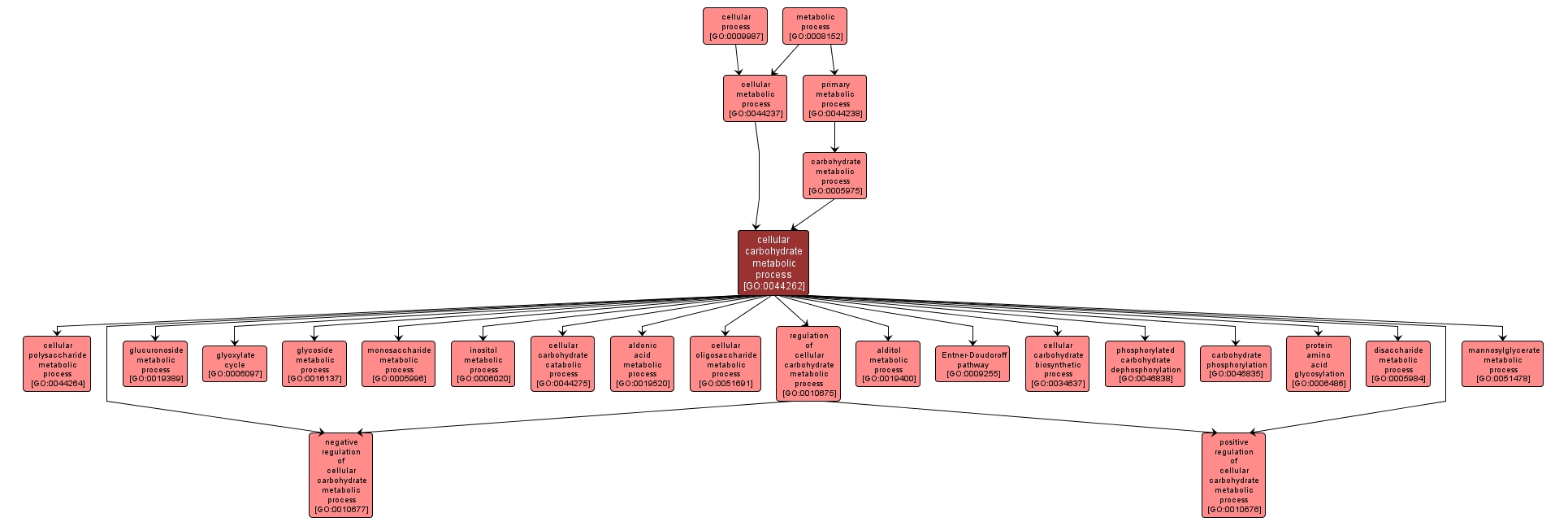GO TERM SUMMARY
|
| Name: |
cellular carbohydrate metabolic process |
| Acc: |
GO:0044262 |
| Aspect: |
Biological Process |
| Desc: |
The chemical reactions and pathways involving carbohydrates, any of a group of organic compounds based of the general formula Cx(H2O)y, as carried out by individual cells. |
Synonyms:
- GO:0006092
- cellular carbohydrate metabolism
- main pathways of carbohydrate metabolism
- main pathways of carbohydrate metabolic process
|
|

|
INTERACTIVE GO GRAPH
|














